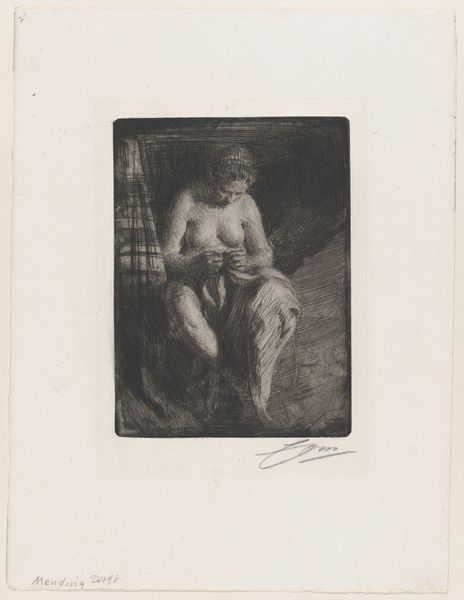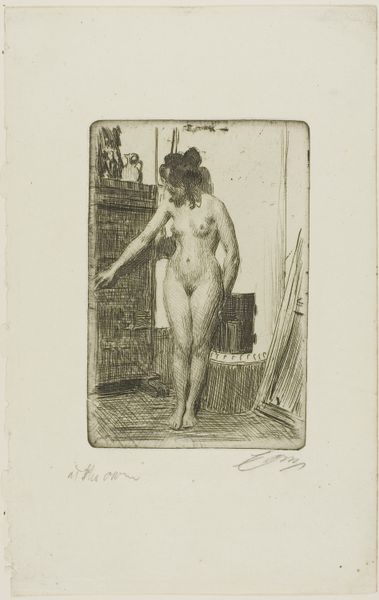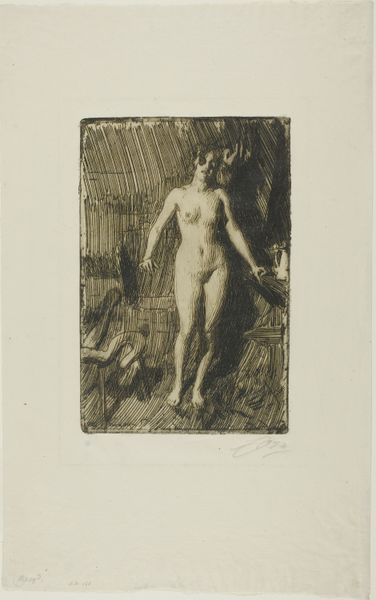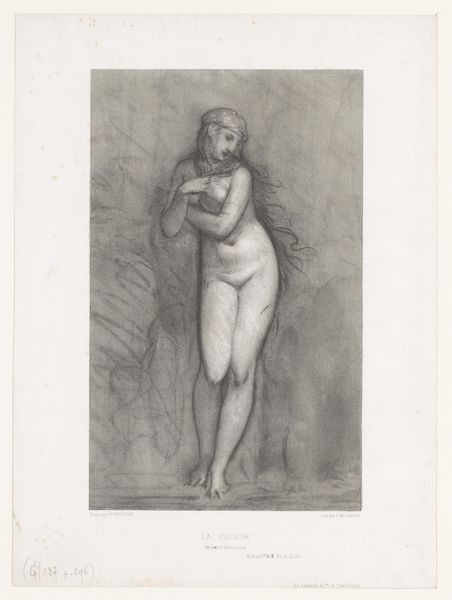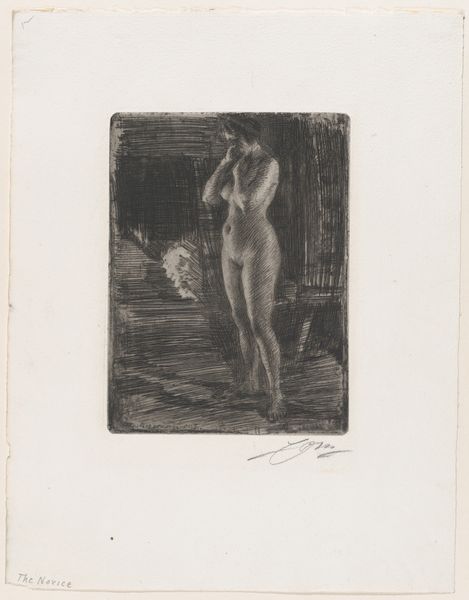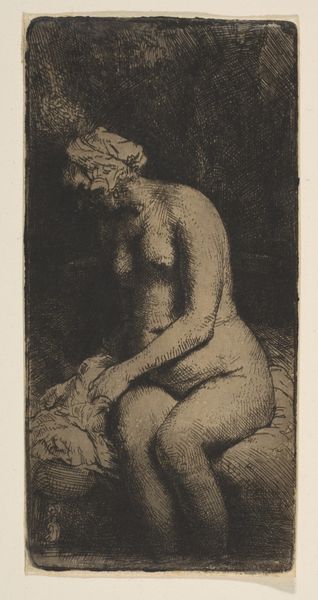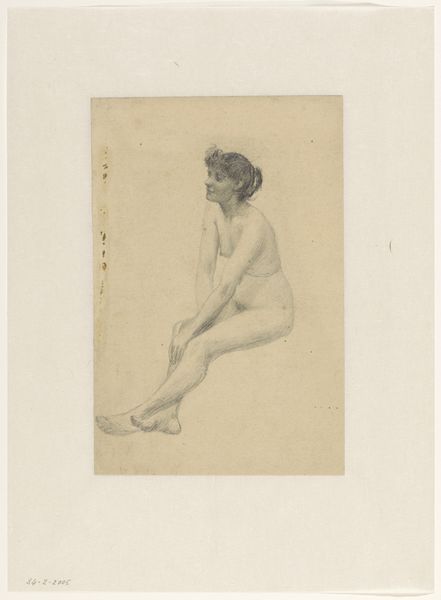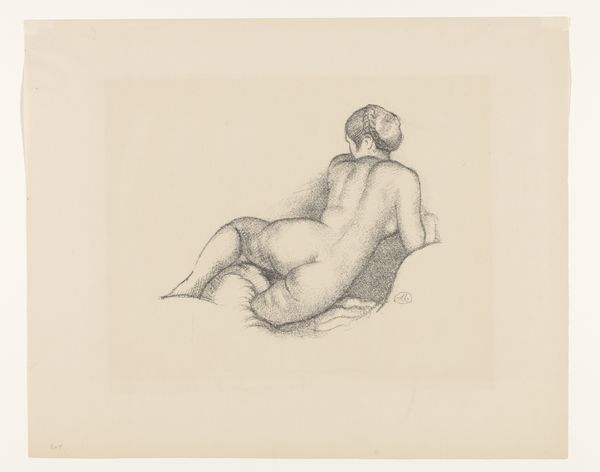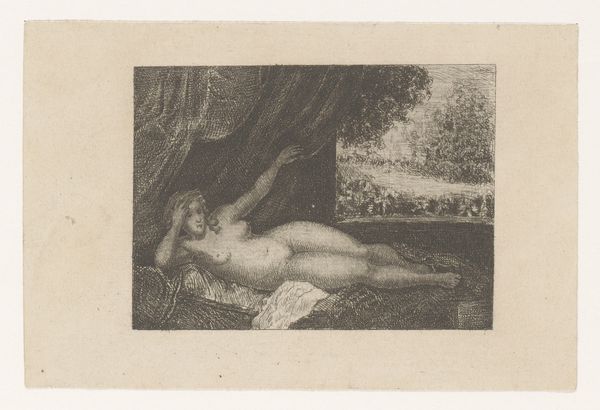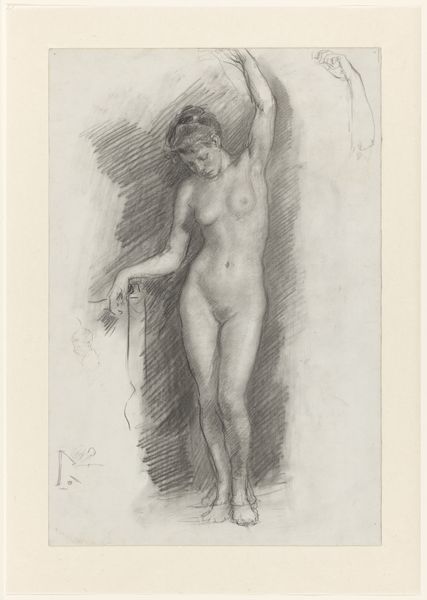
drawing, print, etching
#
portrait
#
pencil drawn
#
drawing
# print
#
etching
#
figuration
#
pencil drawing
#
nude
#
realism
Dimensions: height 129 mm, width 107 mm
Copyright: Rijks Museum: Open Domain
Curator: I’m drawn to the quietude of this work. The way the artist captured the woman, not posed and confrontational, but seemingly lost in her own thoughts. Editor: Absolutely. Here we have "Zittende naakte vrouw die haar knot vasthoudt"—that’s "Seated Nude Woman Holding Her Bun"—a print, likely an etching, by Gustave Buschmann, made sometime between 1828 and 1852. And there’s a softness, even a vulnerability, that I don't often associate with the traditional nude. It’s as though we've caught her in a private moment. Curator: Precisely. Her gaze is directed downward. She doesn't meet ours. Her nakedness doesn't seem performative here but instead matter of fact. And I’m very intrigued by that contrast between the relative realism of her form and the sketchiness of the background details, almost a backdrop—there's some commentary there about what's natural versus constructed within womanhood. Editor: Note also the iconography of hair. She's gathering it up, taming it almost. Within many cultural memories, untamed hair on a woman represents wildness or a certain sexual availability. Bringing the hair up into a bun… what symbolic impact does that confer? Curator: Yes, there's certainly that implication. And it brings questions around conformity, societal expectations surrounding presentation. Who is she taming her hair for? Editor: The shading also, especially around the periphery. It emphasizes the intimacy of the scene, doesn’t it? Makes it feel almost like a clandestine encounter, though of course it’s widely available. Curator: Yes, the way the artist uses the light and shadow creates a kind of haptic dimension—the lines, as spare as they are, help create depth, dimension, a human presence we cannot deny. The art historically informed may want to think of Manet’s Olympia, of course, as a possible point of reference, or departure, as both explore the theme of the nude. But this feels altogether less self-conscious in comparison, wouldn't you say? Editor: Indeed. Whereas Olympia challenges us, perhaps even confronts us with our own gaze, Buschmann's figure almost seems unaware, simply present within herself. Curator: Well, that shifts my perspective. There's something quietly radical in just presenting a nude in a moment of what appears to be interiority. No grand narrative, no allegory, simply a person existing. Editor: Ultimately, a lot is communicated even with simplicity. That quiet honesty—Buschmann's rendering of human form. It's really striking, isn't it?
Comments
No comments
Be the first to comment and join the conversation on the ultimate creative platform.
